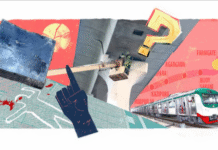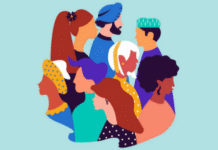A decade of democracy has opened up Afghan society and India’s cooperation programmes have helped develop sustainable links around a shared vision. Dialogues with Afghanistan’s neighbours will become important as these countries start feeling nervous about the return of instability, writes Rakesh Sood
By the end of 2014, two important transitions in Afghanistan had taken place. A political transition to a post-Karzai period had begun after a difficult election process. Second, the International Security Assistance Force (ISAF) flag had come down marking the end of the 13-year-long ‘Operation Enduring Freedom’, transferring primary responsibility for security to the Afghan Army and police forces. Neither has been a smooth transition despite the fact that the timelines for both transitions were known for the last five years. This poses questions about the stability of these transitions and the interests and role of the key external actors.
Political and security transition
The first phase of the two-stage presidential election took place on April 5, 2014 with a turnout of 58 per cent. Expectedly, Abdullah and Ashraf Ghani led the race with 44 per cent and 32 per cent of the votes respectively, but since neither crossed the 50 per cent mark, a run-off was held on June 14. The turnout went up to 60 per cent and preliminary results indicated Ghani winning with 56 per cent of the votes cast. Abdullah rejected the outcome alleging electoral fraud and raising a number of valid questions. Realising the implications of a flawed outcome, the United States resorted to diplomatic heavy lifting with multiple visits by its Secretary of State John Kerry to Kabul. Election results were set aside and a National Unity Government was sworn in on September 29 with Ghani as President and Abdullah assuming charge as CEO, a new position of a coequal but with distribution of powers yet to be defined. The first challenge for the two leaders was the formation of the cabinet. Last week, a list of 27 names (25 Ministers, Central Bank Governor and an Intelligence chief) was finally submitted after numerous deadlines had lapsed, but it remains to be seen whether these candidates will clear the confirmation hearings in the Wolesi Jirga (Assembly). There are rumblings of discontent from Abdullah’s camp that he is not too happy with the current, ambiguous power-sharing arrangement which is supposed to be formally settled in a two-year time frame by constitutionally creating the position of a prime minister. And two years is a long time in Afghan politics!
The timeline of the security transition was laid out when US President Barack Obama announced the ‘surge’ in 2009, simultaneously laying out the schedule of the drawdown and withdrawal of US forces from combat operations in Afghanistan. It was not a decision dictated by the ground situation in Afghanistan, but by US domestic political considerations. Objectives were scaled down so that the illusion of ‘success’ could be maintained. The original objective in 2002 was to ‘build a stable, strong, effectively governed Afghanistan which will not degenerate into chaos’; following the Iraq distraction, this was perceived as nation building and too ambitious during Bush’s second term, and Obama settled for the more modest goal of ‘preventing Afghanistan from becoming a safe haven for global terrorism.’
During the 13-year-long ‘Op Enduring Freedom,’ the foreign troop presence exceeded 150,000 in 2011, contributed by 50 countries, though the US share was nearly two-thirds in terms of troops and higher in terms of air support, air and satellite surveillance and intelligence gathering. Out of nearly 3,500 foreign troop casualties, approximately 2,300 were American soldiers. In terms of ‘treasure,’ while the Congressional Research Service has estimated the US cost of the Afghan war at $686 billion, an independent study undertaken by Harvard University pegs the cost at over $2 trillion. The Harvard study cautions that the major part of this cost is yet to be paid in terms of long-term medical care and disability compensations to serving soldiers, about two million veterans and families, military replenishments and social and economic costs.
Civilian Afghan casualties exceeded 20,000 during this period. Afghan security forces (both Police and Army) today stand at 352,000 and are expected to be reduced to 228,000 by 2017. Meanwhile, their casualty rate has risen sharply in recent years surpassing 15,000, leading to demotivation and resulting in large-scale desertions; $4.1 billion of international assistance is needed annually to sustain these force levels, with the US providing more than half this amount. Yet, it is far cheaper than maintaining a foreign presence. An Afghan soldier’s annual salary is approximately $2,000 and his training and equipment costs $200,000, compared to $2 million that it takes to keep an American soldier there for a year.
Economic transition
In contrast, US expenditure on rebuilding Afghanistan stands at $104 billion, slightly more than what the U.S. spent on the Marshall Plan (adjusted for inflation) for rebuilding 16 European countries after World War II. However, delivery on the ground averages below 25 per cent, given inefficient delivery mechanisms, poor planning and excessively high administration overheads. Progress has been registered in terms of life expectancy (up from 40 to 61 years), literacy (up from 12 per cent to 33 per cent), school attendance especially for girls, health care, urbanisation, roads, mobile telephony, TV coverage is 60 per cent and GDP has gone up from $2 billion to $20 billion but is far short of what could have been achieved. Development plans need more than $5 billion of external aid annually. The fragility of both the political and the security transitions creates uncertainty and, consequently, raises the likelihood of instability.
India has played a significant role in Afghanistan’s economic reconstruction committing and delivering upwards of $2 billion distributed between humanitarian assistance, rebuilding infrastructure and human resource development. In surveys year after year, India has been described as ‘the most friendly country.’ This was possible because of a special trust that developed early on with President Hamid Karzai and his colleagues about the shared vision of Afghanistan emerging as an independent, sovereign, stable, plural and moderate country, focussed on development and determined to turn its back on decades of conflict which had consumed an entire generation. The U.S. too was bought into the vision in the early years but after involvement in the Iraq war, Washington had neither the bandwidth nor the political commitment to stay the course.
Pakistan’s role
Pakistan was uncomfortable with India’s role in Afghanistan which had remained restricted to the economic sphere. Certain sections of the Pakistani establishment, particularly the army and the Inter-Services Intelligence (ISI), were nostalgic about the Taliban period when Afghanistan’s isolation had made it dependent on Pakistan. General Musharraf’s paranoia about the activities of ‘twenty Indian consulates in Afghanistan’ (there are four) only soured his relations with Karzai. The Indian embassy and other cooperation projects became targets of murderous attacks by the Lashkar-e-Taiba (LeT) and Haqqani group, with the support of the ‘S Wing’ of the ISI. Clearly, Pakistan had a different vision for Afghanistan.
Karzai had seen the writing on the wall before the Germans and the British started promoting the idea of reconciliation with the Taliban. He reached out to some of them on the ethnic Pashtun network but failed to make headway because he was unable to wrest them away from the ISI stranglehold. The Germans and the Americans learnt the same lesson with the Doha office initiative. Clearly, Pakistan was back in the Afghan end game. President Ashraf Ghani’s early visits to China, Saudi Arabia and Islamabad show that he understands Pakistan’s abilities to exploit the fragile transition and the US is unlikely to provide much comfort. The key is whether the Afghan forces can last out the 2015 fighting season because in 2016, the US will be caught up in its election year fever.
The India-Afghanistan Strategic Partnership Agreement (2011) positioned India for a security role post-2014, but US reluctance to annoy Pakistan and Indian reticence prevented any significant development. Today, the situation is different and Ghani is unlikely to be as forthcoming as Karzai. However, it is just a question of time before the contradictions of Pakistan’s efforts to bring back the Taliban unfold. The Taliban is no longer the simple monolithic group under a single leader, subject to the ISI’s control. In fact, there are rumours that Mullah Omar may be dead; Taliban has many clones and offshoots with differing loyalties and some are hostile to the Pakistani establishment. A decade of democracy has opened up Afghan society and India’s cooperation programmes have helped develop sustainable linkages cutting across ethnic lines around the shared vision. Dialogues with Afghanistan’s neighbours will become important as these countries start feeling nervous about the return of instability. To manage its exit and keep the transitions on track for 2015 implies that US dependence on Pakistan will only rise in the near term. Normally, this would cast a shadow on India-US ties but given its temporary character, the Indian leadership should work to insulate the wider relationship by keeping the focus on broader counter-terrorism cooperation and deepening the many other aspects of the bilateral relationship. At times like these, patience is a strategic asset, better used to consolidate strengths. For now, the wheel turns, and will turn again.
TheHindu.com, January 20. Rakesh Sood is a former diplomat who has served as ambassador to Afghanistan.
Source: New Age









